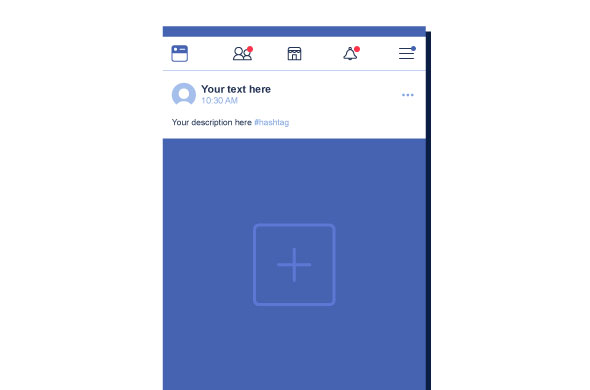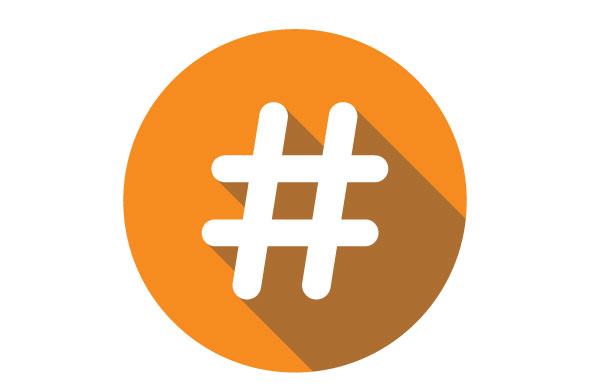Marketing is constantly evolving, always with the baseline goal of reaching prospective clients and communicating the benefits of the business's product or service. At the heart of this evolution is the development of marketing strategies—the research and planning that become the foundation of every marketing plan.
Organizations today employ a variety of media to reach customers wherever they are. From word-of-mouth to digital advertisements, TV commercials to radio announcements, to physical brochures, signage, and billboards, everything is available. Along with these expanding promotional platforms, there is a shift in the audience from listeners to passive viewers to active responders.
This growth in participation has enticed marketers to form a partnership with these content creators, and thus a new approach to brand advertising is born. What better way to approach potential clients on a more equal level than to employ a user-generated content marketing strategy?
What is User-Generated Content?

User-generated content, or UGC, is any type of organically created content made by the users of a particular brand without prior compensation from said brand. UGCs come in various forms, depending on what format the network offers. All content uploaded online, such as videos uploaded on YouTube, images on social media platforms such as Instagram and Snapchat, GIFs on Gfycat, and answers on Quora, falls under UGC.
Let’s talk about these different classifications and what makes them appealing.
Kinds of User-Generated Content
Listicles

For starters, listicles are articles or blog posts that consist of a series of items presented as a list. Listicles of all types for any kind of topic are one of the easiest types of UGC to create and be absorbed by the masses. Its segmented format makes for content that is easily processed and finished. Not to mention, the headlines are specific and eye-catching in search engine results.
Its content is straight to the point, answering the user’s question immediately and helping retain more information. When reading listicles, viewers have the option to either read the listed items only or proceed to the explanations if they want to know more.
Ranking, also a type of listicle, makes it even easier, allowing the reader to either decide to skip at the top of the list or read it all the way through.
Brands can feature or subtly promote their products and services inside the descriptions of listicles. Depending on the tone of the listicle, it can influence people's opinions and readiness to try the brand's products and services—and by tone, it means that listicles are produced to help readers learn more about a specific niche or for entertainment purposes. They can take the shape of text, videos, or even images.
The text form of a listicle is most commonly found in blog articles and posts, accompanied by infographics and embedded backlinks that can be redirected to references or related topics. BuzzFeed is famous for its listicles, even posting blurbs on YouTube and adding an external link in the description or comments for when a user is enticed to know more.
Video listicles are, of course, mostly found on video-sharing platforms such as YouTube or Vimeo. Besides the catchy headlines, the thumbnails are also designed to show something intriguing to hook the readers’ interests and prompt them to click on the said video content. These types of videos also rack up a lot of views due to their appeal to the majority of users in all age groups. Watchmojo, including its other channels, is one of the most well-known listing and ranking channels, listing everything from “The Top 10 Iconic Global Liquor Brands” to the “Top 20 Worst Shark Tank Pitches of All Time.”
Picture form lists are, meanwhile, found on photo-dominant websites such as Pinterest, Tumblr, and, of course, Instagram. They can either be screenshots of text lists, infographics, stock photo collections, or commissioned image content. This format is the easiest to absorb by the audience because of its short representations of explanations.
Talk to our team!
Send Me a Quote
Forum Discussions

Internet forums or message boards like Reddit and Quora work similar to blogs, but the appeal of the sites is the discussion around specific topics. A post can generate one to hundreds of threads, each with differing opinions and tones.
Any topic under the sun can be the subject of these discussions. Users are allowed to ask questions, post something about current events, share fan works, and even speculate about current investigations.
Not only are internet forums ideal for in-depth discussions and reviews, but also for storyline-based businesses like games, books, and anything that involves lore. Popular topics can generate a lot of daily posts and comment threads, garnering the interest of any curious wandering user.
Take Reddit, for example, which has varying “subreddits” where you can choose to post or comment. Subreddits, identified by the ‘r/’ in the beginning, are like communities about a certain topic, and help users find where they want to interact.
Shopping Hauls and Unboxing

These types of UGC come in video form, with some users sometimes even doing them live. Shopping hauls and unboxing content are basically other forms of product review, albeit with a visual reference combined with the novelty of showing the manner of acquisition and the process of unraveling the packaging itself. The glimpse of user experience assists the watchers in determining whether the product is worth the trouble or not.
Shopping hauls involve content creators buying several products from one or more sources and then checking the merchandise’s individual qualities.
Safiya Nygaard does this every once in a while on her lifestyle YouTube channel. She has bought makeup recommended by Facebook Ads, put together three looks from Instagram Shop, tried SevenEleven’s own makeup products, and more.
Meanwhile, an unboxing video, as its name suggests, is any video uploaded online that shows a creator taking a product out of its box. In its most basic form, an unboxing video showcases everything that users need to know about a particular product—both its original packaging and what’s inside it. The goal of an unboxing video is for viewers to see what exactly are the things that are in it for them when they opt to buy the product.
While it can overlap with shopping hauls, it is a separate genre in itself. The package itself can be a PR package or something the content creator themselves sought out without any company’s prompting.
Unbox Therapy is one of the most popular YouTubers in this genre. Lewis Hilsenteger, the host, unboxes a wide range of things, from new cellphones to the weirdest devices, and examines the costs and functionalities of each item.
Tutorials

One third of internet users watch tutorials and how-to videos every week. Like lists, this can come in text, video, or pictures, but this UGC is more informative and focuses on a specific goal.
A number of brands can be featured in video lessons. There are YouTube channels devoted to makeup and beauty tutorials, such as NikkiTutorials, which focuses on demonstrating how to accomplish a variety of stunning beauty looks utilizing a variety of quality beauty products. Jazza, on the other hand, focuses on digital and traditional art, experimenting with art software applications and offering suggestions for a variety of art media.
Influencer recommendations motivate potential customers to seek out the product. As such, there is an element of product review in this content as well, but leaning towards a more positive note.
Online Shop Product Reviews

Most online shops today allow their users to leave their feedback about the products they buy through the review section provided under their product listings. It’s the fastest way companies can get feedback from their customers, speeding up customer service and data gathering.
The product ratings are also a useful guide for potential buyers on whether to buy it or not. Studies say that 83% of customers’ purchasing decisions are affected by recent and relevant reviews, while 58% would support a company more if they had a majority of good or positive reviews.
This UGC is especially useful for application development and prototype testing. User reviews on Steam, a popular video game digital distribution service provider, and the storefront by Valve, for instance, determine the overall reception of a game and point out bugs that have escaped the quality testing phase.
How to Get User-Generated Content
The first thing to keep in mind is to pique people’s interest. What makes your brand different from your competitors? What do you offer that will make you the talk of the town?
Bombarding users with boring ads and promotions only serves to annoy and refuse any attempt at interaction just on principle. UGC offers a more eye-level approach to marketing, and so brands should adapt to that point of view.
How does a UGC strategy work? And what are the steps you can take to strengthen it?
User-Generated Content In Marketing
There are 4.70 billion social media users around the world, more than half of the world’s population. These users have an average daily time spent of 2 hours and 29 minutes using social media. It’s only natural that marketing strategists would notice this large audience and the potential of user-generated content.
People are more likely to trust fellow people than company logos. The personal aspect brings more relatability and persuasion, and therefore more interaction.
Over time, more and more brands have joined in the more aggressive approach to social media marketing. There are no set methods, but below are four of some of the best practices to refine your user-generated content marketing strategy.
Killer User-Generated Content Strategy: 4 Best Practices
1. Choose the Right Platforms

First on our list of user-generated content strategies is to choose the platform to gain better footing.
It’s natural, of course, to create a presence on the top social media sites like Facebook, YouTube, Instagram, and Facebook. The bigger the audience, the better, right?
But which network does the majority of your audience use? Start cultivating your presence there first before branching out.
Always take your brand, the products you offer, and your primary customers into consideration. Then familiarize yourself with your chosen social media platforms and get a feel of the social dynamics and atmosphere.
2. Talk To Your Customers

Make sure that you keep your audience engaged by maintaining an interactive atmosphere. You start by asking questions. Ask your customers what they want to see next. Will it be a prompt for funny answers or a trivia question?
Give a reason for users to interact and reply back to let them know that you acknowledge their responses and that there’s a person behind the original post. Don’t hesitate to joke around and be sarcastic so long as everyone knows that it is done in good humor.
In that same vein, always check your mentions because some users prefer to mention a business account in an original post rather than responding to the content. Playing this right leads you to get more interaction with your patrons, thus allowing you to gain traction and even steal the social spotlight.
3. Brand Personification

Give a spark of life to that logo and add some personality to your brand. Commit to that personality in your promotions and your manner of interaction with your customers. More and more brands are utilizing this UGC strategy given the influence of Gen Z humor and meme culture.
Cards Against Humanity, for example, has become synonymous with dark and edgy humor. They are unapologetic about finding humor in sensitive topics and are very committed in their goal to bring the fun in everything.
Alternatively, use a similar route and create a mascot, a character who embodies your brand, and build a plot around that character. Besides sports teams, mascots are also commonly used by fast food chains, with colorful characters like KFC’s Colonel Sanders, McDonald’s Ronald McDonald, and Burger King’s, well, King. What do you think of when you see a friendly old man in a white suit? How about a redheaded clown dressed in red and yellow stripes? A king with an uncanny smile?
Your mascot can entice a younger audience and even older ones with the mascot's backstory. It might even provide a nostalgic element if your mascot has been around for a while.
4. Utilize the Hashtags

Hashtags are a helpful tool in grouping content relating to a specific subject matter. It also adds context to your content without requiring you to use too many characters.
Amplify your online visibility by using a branded hashtag. For starters, a branded hashtag is a hashtag that is unique to your brand. It can be as simple as your company name, your tagline, or the name of the product or event that you are currently promoting. Perhaps you’ve already come across hashtags like #OpenYourWorld from Heineken’s social media ads or KFC’s #NationalFriedChickenDay; these two fall under branded hashtags.
When using hashtags, avoid using an oversaturated one, lest you risk drowning your content in an avalanche of posts. Better yet, start a campaign for a good cause or bring light to an issue beyond your brand. Take part in the goal of unity and diversity with Coca-Cola’s #ShareACoke hashtag. It’s a multi-national campaign that lets buyers personalize their bottles and encourages sharing their coke with other people, despite whatever barrier that divides them.
Moderating User-Generated Content
The large audience provided by the wide-spread use of social media makes it a given for marketing strategists to have a user-generated content strategy in their marketing plan.
Something as simple as choosing the right platform can majorly affect your engagement and sales. Simple steps like distinguishing the different types of UGC and applying the best practices can put you on the right path towards your goal.
The internet has more than half of the world’s population. With that many people, there’s bound to be trolls, bot accounts, and quite a number of unpleasant users. Most UGC creators come with a lot of following, and along with that following is almost always a toxic subset.
Prevention is always better than cure, so it’s better to moderate your UGC as early as possible. However, you might not have enough hands or expertise to handle this task. If so, perhaps Chekkee could be of great assistance! Our UGC moderation services employ the hybrid advantages of human and AI moderation processes to keep unwanted and inappropriate user-generated content at bay.
Chekkee comes with real-time content-checking and provides you with accurate reports. You don’t have to worry about sorting through a flood of content and can leave the job instead to our seasoned content moderators.
Moderate UGCs today, get your free quote now!



